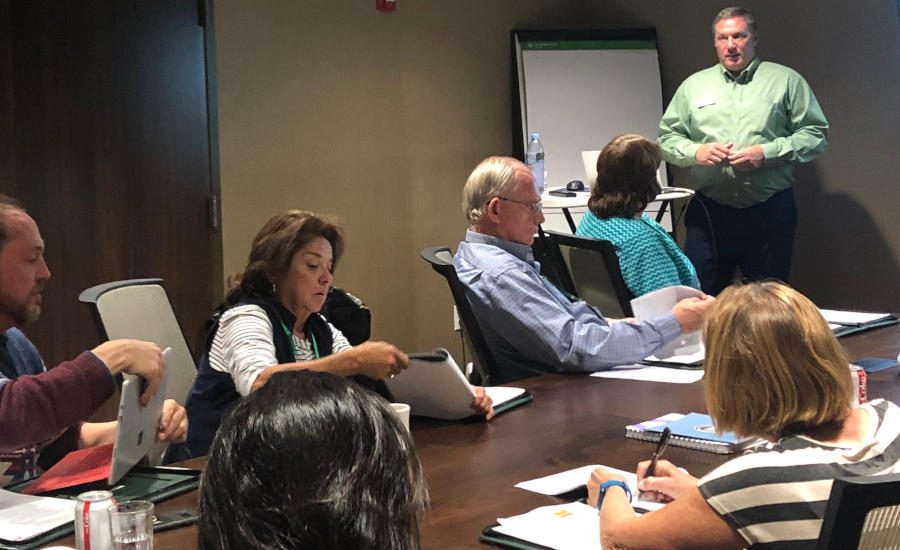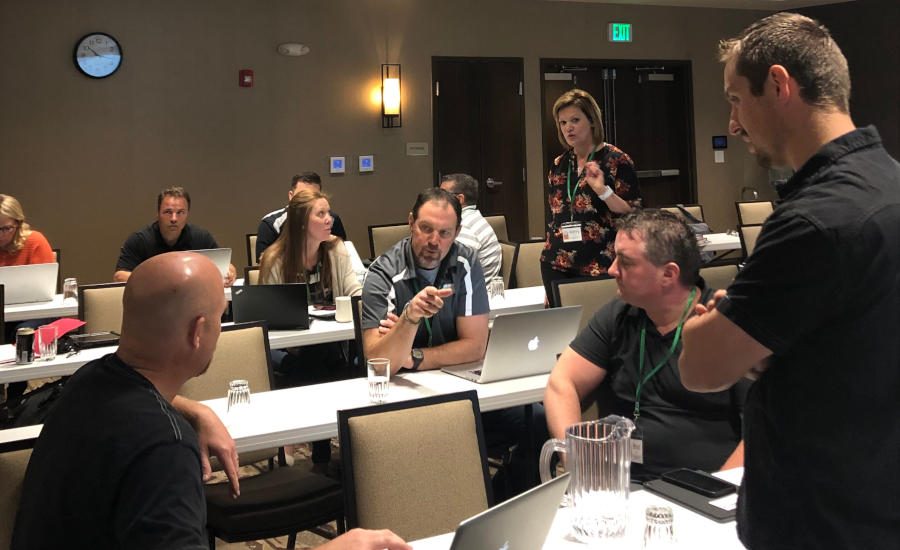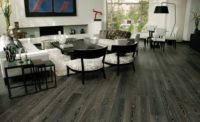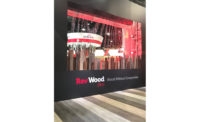For exactly 20 years this month, QFloors has been providing software designed to specifically meet the business needs of flooring retailers. For operations ranging from large to small, with QFloors industry-specific software, retailers are managing nearly all aspects of their businesses, from purchase orders and inventory, to sales goals and leads, with streamlined ease and efficiency.
QFloors and customers recently took to the Zion National Park area to ‘Explore the Possibilities’. The possibilities of what QFloors’ robust offering can continue to do for their businesses now and in the future; the possibilities of what they can learn from fellow customers and industry peers; and the possibilities of where the scenic trails and rugged paths of Utah’s first national park could take them.
“We wanted to do something that was different and make it kind of special for those who chose to celebrate with us,” said Chad Ogden, president and CEO of the company. “We thought that this was a unique place in the country that most people, most of our users, and other people, had never been to.”
Doing things differently has been a running theme for the company since it got its start in 1999. Creating a Windows-based flooring industry-specific software system, which had not yet been done at that time, gave QFloors its foothold in the industry.
“These guys have always made a conscious choice to do things differently from the very start,” said Chris Ogden, director of marketing for the company. “From the very first program they did Windows when everyone else was following the same exact docs style. And that has kind of permeated throughout the 20 years.”
QFloors’s ability to meet the needs of its growing customer base can be traced back to its origination, when CFO Trent Ogden recognized a need for a business management software to help run his father’s franchise flooring retail operations.
“QFloors directly came out of my dad and my experience and need to provide an easy to use Windows package, if possible, that could manage these smaller floorcovering stores. There was a need there and that need wasn’t being fulfilled with the other floor covering software that were in the market at the time.”
Desiring a system that was not only specific to the flooring industry, but also could be easily used by several employees rather than just one or two people in the back office, Trent and his father enlisted the help and tech expertise of brother and son Chad.
“You have to have the salespeople doing their proposals and their invoices and their inventory decisions on the software itself,” said Trent. “You can't have manual systems or paper making those decisions for you. “So that was a big part of the way QFloors was designed. It had to be easy to use and a salesperson can run QFloors on two screens and do everything they need to do.”
Bringing the idea of this easy to use system to life, Chad put pen to paper and began to flush out a blueprint of what’s known today as QFloors. Since then, the company has seen its fair share of ups and downs, but since the end of the recession in 2012, QFloors is happy to report many more ups than downs. More than doubling in size in just seven years, QFloors now provides software for 1,115 business of various sizes and roughly 6,000 users.
“People talk about our customer support and we have a reputation now in the industry of being very excellent in that area,” said Chad. “I think that is a huge deal to a lot of people; that they feel supported.”
QFloors customers since 2001, Mary Jane and Dan Dorman were some of the very first retailers to enlist the help of QFloors programming. “We started our business 25 years ago and we were using QuickBooks and then we changed to one of the only software programs that was available to use at that time,” said Mary Jane. “But we had so much trouble with it and it really caused us a lot of concerns and it was just too difficult. My staff couldn’t use it.”
Discovering QFloors at an industry convention, the Dormans took a leap of faith, forfeiting the money they’d invested in the flooring industry-specific software they were using at the time and switching over to newly founded QFloors. Eighteen years later, they credit much of their success in the industry to QFloors’ programming, and they have not looked back since. “It’s a very easy program to track almost anything,” said Dan.
Customer service paired with ease of use have resulted in approximately 25% of those using other flooring-specific software systems to make the switch to QFloors just as the Dormans did, and today, one in four flooring businesses is a QFloors customer. This year alone, the company has seen its largest increase in customers to date.
“If QFloors continues to grow at the same rate that we have in the last couple years, in 2021 we will have the most businesses in this industry using floorcovering software,” said Chad.
As the industry evolves, QFloors is evolving right alongside it. Software connectivity is imperative to that growth and B2B (business to business) was a major topic of discussion at the company’s user conference.
“The one thing that has changed a lot since the beginning is systems,” said Chad. “Computer systems are talking more to each other and that’s not just in floor covering, but that's throughout all industries where systems have to be able to communicate with each other. “It used to be back a while ago where your software was pretty much just contained within your own company and it didn't have to communicate. But now your software has to be able to connect to this software over here and this one over here to get the information.”
A prime example of this B2B system communication is Amazon, Chad says, where thousands of systems are communicating with each other to deliver products to customers. Through B2B connectivity, QFloors and vendors like Shaw Industries are able to communicate and share information back and forth. “That really is kind of the future and how things have changed from when we started to light today is its mandatory now that your systems have to be able to communicate not just with in your own company but external systems.”
Also in store for QFloors’ future is the highly anticipated QPro, which, in its initial stages, will be a subscription model ideal for the roughly 6,000 flooring industry stores that are not currently using any type of flooring industry-specific software.
The company is making significant investments into QPro, and as it evolves over the next four to five years, the Ogdens anticipate QFloors customers will gradually migrate to QPro as more features are made available within the system.
“The long-term future of our company is QPro,” said Trent. “The medium-term is both systems. QPro will be mainly for the smaller dealer, at least for the next few years, that already has an accounting system in place on the backend.”
As a major contributor to the industry’s B2B initiatives, along with a trajectory of being the fastest growing software company in the flooring industry, QFloors is optimistic as it moves toward its next 20 years of business, now at the front of the pack.
“I think the others that come, competitors, will need to follow our lead or they probably won't stay around that long,” said Trent. “And that lead is that you have to have a browser-based software.”
For more information, visit www.qfloors.com.













